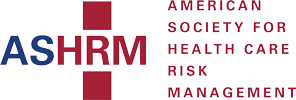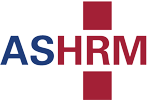Hospitals and health care employers often rely exclusively on injury data, patient falls and OSHA logs for decision making on safe patient handling initiatives. However, these analytics can fail to provide the wide line of sight needed for more proactive approaches to addressing how the human factor may impact patient handling, patient safety and liability programs.
The Washington State Safe Patient Handling Program recommends analyzing a facility’s injury data to assess all aspects of patient handling claims as the first step in a risk assessment. These data include both employee injuries recorded on the OSHA 300 log, workers’ compensation claim records and patient injuries that may be related to mobilization, such as falls and skin breakdown.
The OSHA Safe Patient Handling Checklist appears to go a step further. It recommends tracking the success of a program by examining the number and type of staff injuries and specific activities that led to these injuries; the number of lost work or modified duty days; and the effectiveness of the safe patient handling policy.
The Implementation Guide to the Safe Patient Handling and Mobility Interprofessional National Standards recommends – in addition to OSHA logs and workers’ compensation claims data – the collection of adverse patient event data, such as fall-related injuries, DVT/PE, pneumonia, readmissions and health care worker satisfaction data.
Workforce Considerations
While all these data elements are essential, a key part in patient safety involves the overall health and well being of the organization’s workforce. While the three previously mentioned guides call for examining worker injuries, none recommend examining workforce demographics.
As nurses and other professional and support staff age, they face their own health issues, including diabetes, arthritis, hypertension, obesity and other co-morbidities that can affect performance; patient safety and mobility programs; general quality; and employee safety.
Worker Health Considerations
A recent study by the Centers for Disease Control found, in the United States, 22.7 percent of adults have arthritis with an even higher prevalence among people with other chronic conditions. From 2013 to 2015, CDC research indicates the unadjusted prevalence of arthritis among adults who were obese was 31 percent; with diabetes, 47 percent; and with heart disease, 49 percent.
The CDC study also revealed that adults who were obese, had diabetes or heart disease were approximately 1.5, 1.7 and 1.9 times more likely to have arthritis, respectively, than individuals without those conditions.
The data underline the importance of examining the role of worker health status in patient and worker safety. For example, if 35 percent of the workforce is experiencing arthritis, what’s the overall effect of this on safety? Similarly, if 71 percent of the caregiver population is overweight, what role is this playing? And, if 55 percent of the nurses are age 50 and older plus working consecutive 12-hour shifts, how is this affecting safety?
Having the right data and analyzing more than the standard lagging indicator trends may reveal a wealth of knowledge as to how these co-morbidities may be impacting injury trends. Incorporating these workforce analytics into safe patient handling programs may help to expand initiatives beyond basic safety (e.g., equipment, training, etc.) to include the organization’s overall culture of health and the underlying conditions impacting the employees tasked with mobilizing patients.
Collaborating to build a comprehensive approach to patient safety
The ability to obtain data from multiple sources, align all the metrics and build them into a more comprehensive approach to patient mobilization and safety calls for support by senior management for the creation of an integrated health, safety and wellbeing initiative within the company. According to the Harvard School of Public Health’s Guidelines on integrating such programs, an effective starting point is to form a multi-disciplinary team with representatives from relevant stakeholders.
The team or committee would work to build ongoing collaboration and dialogue around the issues facing employees as they relate to health, safety and wellbeing. Each stakeholder can facilitate this holistic approach by presenting their specific data elements, for instance:
- Risk management: insurance premium and casualty program costs
- Safety: event management system data, claims data and employee injury trends
- Human resources: data trends on employee engagement, pharmacy trends, population and aging-worker issues
- Occupational health: data trends by occupation, root cause, nature of injuries and return-to-work indicators
- Quality: data on trends by department or areas that are over- or under-performing
- Legal: data on litigation trends
- Wellbeing champions: data on programs, participation rates and other benefit programs
- Operations: data on absenteeism, staffing levels and occupancy rates
- Chief nursing officers: data on patient handling equipment, needs and utilization, patient characteristics (weight, diagnoses, unit trends)
- CFOs: data on the 1-, 3- and 5-year fiscal plans.
The stakeholder data paint a comprehensive picture to identify the employee trends that could place patients at risk of injuries, particularly during mobilization. For instance, from key questions such as:
- Are a high number of employees diabetic?
- Are a significant number of employees overweight or obese?
- Is the patient population impacting the number of times patients are being mobilized or turned?
- Which wellness programs are seeing the greatest participation rates?
- How can this data be aligned to improve overall safe patient-handling strategies?
Depending on the system capabilities of the company, these data elements are usually collected and presented in de-identified segmentations and by vendors, third-party administrators or data-warehousing providers.
The goal is to develop comprehensive and coordinated approaches to address specific issues identified by the team. For example, if obesity is a significant issue in the current workforce, then the wellbeing, health and patient handling program would align to address this issue and work in unison to develop strategies to improve the trend and drive results. By collaborating, these efforts can be more effective in the short term and long run than siloed approaches typically in place at many companies that look solely at factors independent of the workforce health data.
When reviewing employee injury data, it is possible to lose sight of the human element and focus on cause-and-effect solutions that do not account for the health of the workforce performing the task. By adding worker population data to patient safety analytics and forming a multi-disciplinary team, organizations can gain a more comprehensive understanding of the root and contributory causes impacting mobilization programs.
With this perspective, health care organizations can allocate resources where they are likely to achieve the most significant gains in patient and employee safety, along with continuous improvements in quality and performance. With data warehouse capabilities, the time has come to cast a wider net around workforce health characteristic and develop inclusive strategies.
Conclusion
Health care organizations that fail to integrate workforce population health data into their safe patient handling and other analytics may lack what’s required for sustainability of these initiatives and for achieving breakthrough results, synergistic strategies and alignment.
Pharmacy, health and absenteeism data, 401k participation, engagement data, and biometric screening data are all essential for understanding workforce issues that may underscore safe patient handling.
Therefore, risk managers should consider including the following types of data in any analytics focused on driving advances in patient safety: workers’ compensation loss and safety data; patient data, such as falls, pressure ulcers and satisfaction; workforce health data; and organizational data, including quality, satisfaction, engagement and insurance costs. This knowledge offers a greater understanding of the population performing patient mobility tasks and contributes to developing more comprehensive interventions to mitigate risks.
Vicki J. Missar, an associate director with Aon Global Risk Consulting in the U.S., is guest lecturer for the Harvard T.H. Chan School of Public Health, Center for Work, Health, and Well-being, and is a thought leader in developing solutions for employers around aging workers, integrated health, safety and well-being, and systems approaches. She holds a master’s degree in occupational biomechanics and ergonomics.







